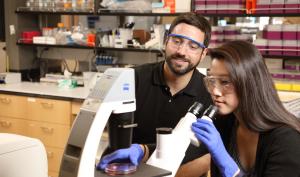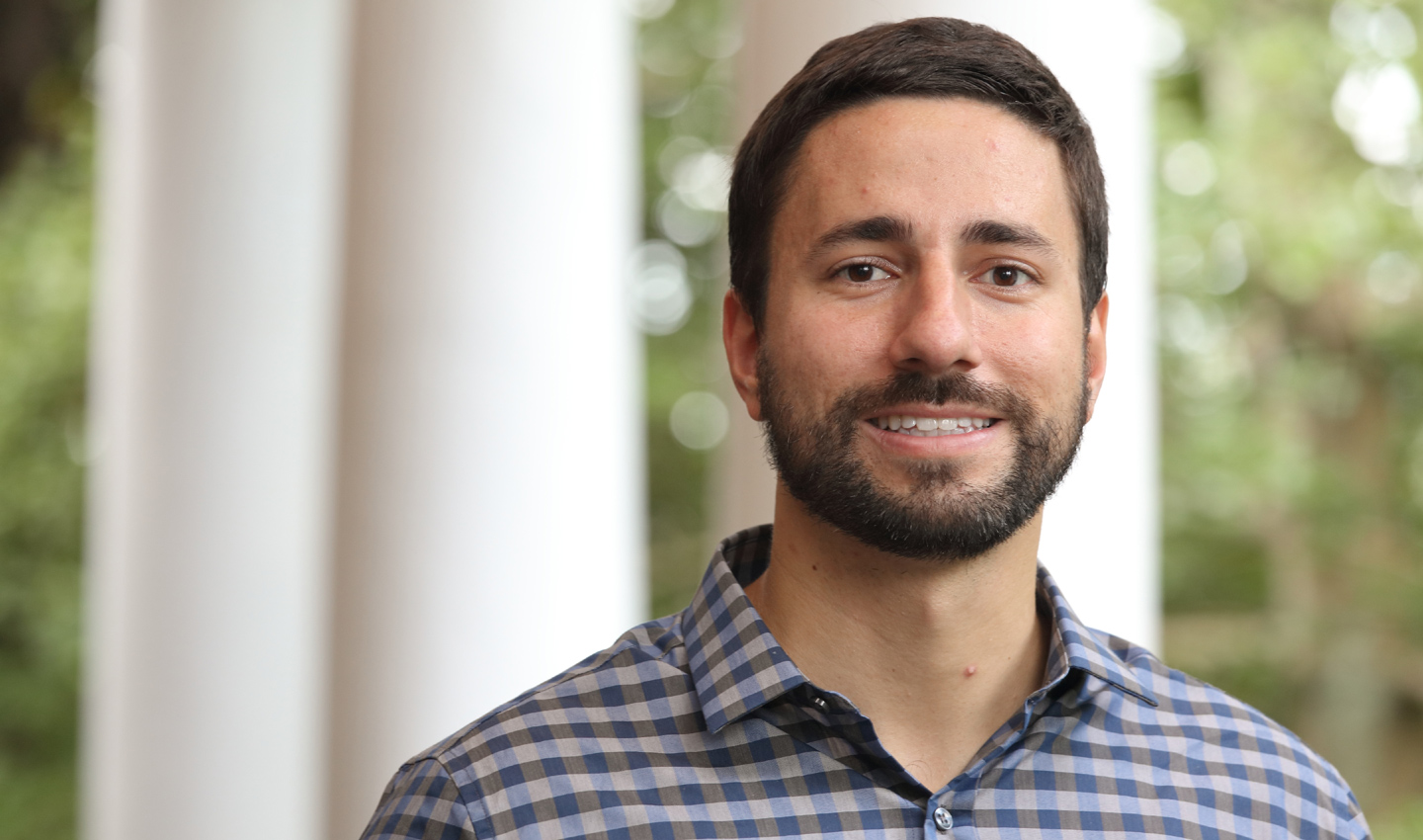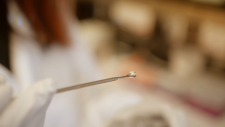
Clicking the send button on a grant proposal to the National Institutes of Health, Steven Caliari felt as hopeful as he was tired.
Getting this funding, a Maximizing Investigators’ Research Award for Early-Stage Investigators, would be a big deal for his research lab. And the grant could lead to better treatments for people with debilitating fibrosis or traumatic muscle injuries. Caliari’s group designs biomaterials to study how cells interact with their environment — methodical work with potentially sweeping implications for tissue engineering research.
The award wouldn’t fix his sleep problem, though. The proposal was Caliari’s first since his son was born in August, exactly two months earlier, but his second crack at the grant, known as a MIRA.
“We had a lot going on. My wife and I were sleep-deprived and learning how to be parents,” said Caliari, an assistant professor of chemical engineering and biomedical engineering at the University of Virginia.
“I was happy to just get something in when my son was that small. I also had good feedback from the first time I submitted the proposal, and thought I made the right adjustments for the reviewers.”
He was right.
The $1.8 million award, through the National Institute of General Medical Sciences, one of the National Institutes of Health, will support Caliari’s biomaterials program. A MIRA provides stable, flexible funding with the goal of boosting productivity and improving chances for important breakthroughs. Investigators can explore, take risks and be opportunistic when findings lead in unexpected directions. The program also aims to distribute funding more widely among the nation’s highly talented and promising investigators, according to the institute’s website.
“Normally each of the three research themes in our application would have to be written as their own separate proposals,” Caliari said. “This will allow my lab to pursue a diverse range of projects broadly falling under the mission of the National Institute of General Medical Sciences. It’s a nice one to get, for sure.”

For William S. Epling, professor and chair of UVA Engineering’s Department of Chemical Engineering, the recognition is another validation of Caliari as a difference-making researcher.
“I’ve been nothing but impressed with Steven since joining UVA. In watching his enthusiasm and efficiency in designing and building his research enterprise, his student mentoring and his collaborative nature, I was confident this would all lead to success in his scholarship.”
Materials Engineering Meets Biology
Caliari estimates the new funding will support two or three Ph.D. students over the next five years, including students already working in his lab. The work encompasses three key areas focused on making biomaterials called hydrogels — water-absorbing, three-dimensional materials — with physical properties designed to act like living tissues. The group places cell types found throughout the body in or on the hydrogels to study how the cells respond to mechanical or chemical signals coming from the properties engineered into the materials.
“We are uniquely positioned to work at the interface of hydrogel development and mechanobiology — understanding how mechanical properties affect cell behavior,” Caliari said. “Some groups specialize more on the materials or biology side, but not many are able to do impactful work at the intersection of both fields.”
Scarring and fibrosis, the stiffening around injured or diseased tissue, are examples of mechanical signals. Lack of tissue rigidity — the non-scientific term is “squishiness” — also sends signals. Both give clues to the progression of disease. Until recently, researchers believed that scarring was a side effect of disease or injury, not a part of the process.
“We’re finding out early changes in the rigidity of the tissue surrounding the cells can actually be a signal for those cells to transition from a normal state to a disease state,” Caliari said.
“Tissue mechanics directly regulate numerous cell behaviors involved in development, wound healing and disease progression. The idea is that if we study cells in controlled environments that we design, we’ll be able to learn how to better manipulate their behavior in the body when we’re trying to fight disease or repair tissues.”
Erica Hui arrived at UVA in 2016, the same year as Caliari. She is the lab’s original Ph.D. student, and pioneered some of the initial experimental work in mechanobiology — the first research theme covered by the grant.
“My first paper is in that proposal, so it was rewarding and motivating to get validation that the work I have been doing is going in the right direction,” Hui said.
The grant also is funding her final year at UVA Engineering — a nice epilogue to a graduate career that she began by helping to establish the lab, with new equipment arriving daily.
“I would come in and there would be 50 boxes to find a place for almost every other day,” Hui said. “I was by myself for a year. But I wouldn’t have changed it, because it was a great learning experience to be able to quickly turn around what I had learned and teach the next group of students.”
What she learned to do was to fabricate customizable biomaterials for research. Put another way, Hui built a cell culture system that provides the essential infrastructure for the lab’s research programs.
Recipe for Discovery
“The beauty of designing these materials outside of the body is that we are able to have a more efficient method of screening and looking at various cell behaviors during healthy and disease processes,” Hui said. “It’s very easy to make a lot of these hydrogels in a short amount of time, so we can design a host of hydrogels that may look the same on the outside, but present different mechanical and chemical cues.”
How does this work?
“I guess you could say it’s like adding ingredients to a recipe,” Hui said, although in this case, the measuring spoons are pipettes. “Basically, we have a concoction of components — one or more polymers, a cross-linker, different peptides and proteins. Depending on the amounts we put in, we can develop a range of materials that give us the properties we want.”
For example, they can make the material soft, stiff, elastic or viscous. The “ingredients” are usually in a water-based solution. By subjecting the mixture to ultraviolet light, the molecules polymerize into a solid hydrogel. This process, called cross-linking, is a chemical reaction in which individual polymer chains come together to form larger water-swollen polymer networks — the textbook definition of a hydrogel.

